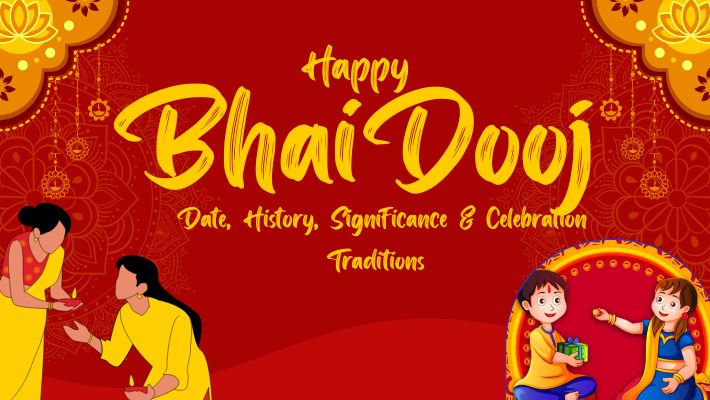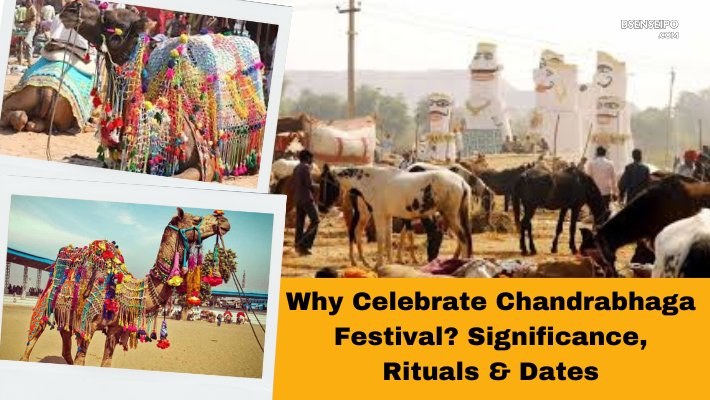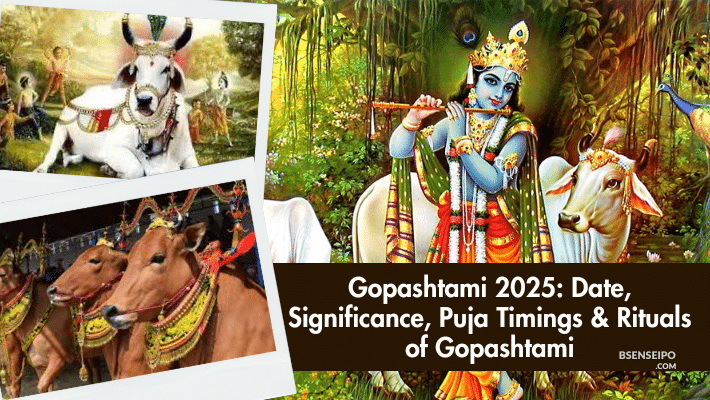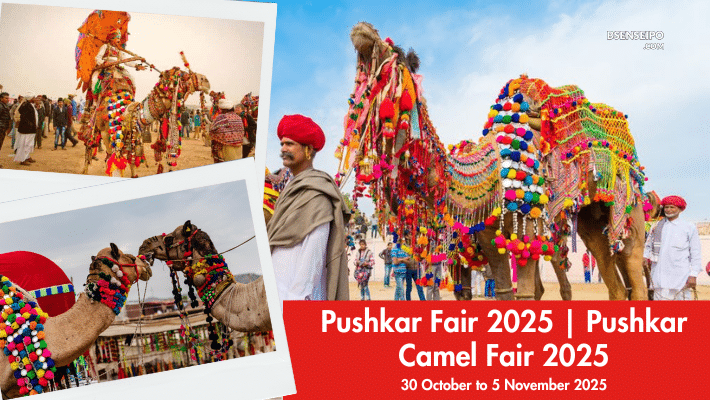Bhai Dooj 2025: Date, History, Significance & Celebration Traditions
Bhai Dooj, also known as Bhau Beej, Bhai Tika, or Bhai Phonta in different regions of India, is a cherished Hindu festival celebrating the sacred bond between brothers and sisters. In 2025, Bhai Dooj will be celebrated on Thursday, October 23, 2025, marking the conclusion of the five-day Diwali festivities.
Date and Muhurat of Bhai Dooj 2025
- Date: Thursday, October 23, 2025
- Aparahna Time (auspicious period): 01:00 PM to 03:22 PM (IST)
- Dwitiya Tithi Begins: October 22, 2025, at 8:16 PM
- Dwitiya Tithi Ends: October 23, 2025, at 10:46 PM
Bhai Dooj falls on the Dwitiya Tithi (second lunar day) of the Shukla Paksha in the Hindu month of Kartika, just two days after Diwali.
What is Bhai Dooj? (Significance of Bhai Dooj)
The festival symbolizes love, care, and protection between siblings. On this day, sisters pray for their brothers’ long life, prosperity, and well-being, while brothers promise to protect their sisters from all harm.
According to Hindu mythology, Bhai Dooj is associated with the story of Lord Krishna and his sister Subhadra. After slaying the demon Narakasura, Krishna visited Subhadra, who welcomed him with sweets, tilak, and flowers—marking the origin of Bhai Dooj.
- Meaning: The name comes from “Bhai” (Brother) and “Dooj” (the second day after the new moon). It is a festival that celebrates the sacred and unbreakable bond of love, protection, and mutual respect between brothers and sisters. It marks the conclusion of the five-day Diwali festival.
- Mythological Legends:
- Yama and Yamuna: The most popular legend. On this day, Yamuna, the sister, welcomed her brother, Yamraj (the God of Death), to her home, applied a ceremonial tilak, and offered him a special meal. Moved by her devotion, Yamraj declared that any brother who receives a tilak from his sister on this day will be blessed with longevity and protection from an untimely death. The festival is also known as Yama Dwitiya.
- Lord Krishna and Subhadra: After Lord Krishna defeated the demon Narakasura, he visited his sister, Subhadra. She welcomed him with a warm reception, a ceremonial tilak, and aarti, symbolizing her prayers for his safety and well-being.
- Goal: Sisters pray for their brother’s long life, health, prosperity, and happiness, while brothers pledge to protect their sisters for life.
How Bhai Dooj is Celebrated (Rituals and Customs)
- Tilak Ceremony: Sisters apply a ceremonial red vermillion tilak on their brothers’ foreheads, symbolizing protection and blessings.
- Aarti and Prayers: Sisters perform aarti and pray for their brothers’ well-being.
- Exchange of Gifts: Brothers give gifts or money to their sisters as a token of love and appreciation.
- Feasting: Families come together to enjoy festive meals, sweets like soan papdi, laddoo, and barfi, making the day more joyous.
Regional Variations
- In Maharashtra and Gujarat, the festival is called Bhau Beej.
- In West Bengal, it is celebrated as Bhai Phonta, with special rituals and traditional foods.
- In Nepal, it is known as Bhai Tika, where sisters put a seven-colored tilak on their brothers’ foreheads.
Modern-Day Celebrations
With changing times, Bhai Dooj has evolved beyond traditional rituals. Siblings who live far apart celebrate the day virtually through video calls and send gifts or e-cards online. Social media is also filled with heartfelt messages and nostalgic pictures, strengthening the bond even from afar.
Conclusion
Bhai Dooj 2025 is more than just a festival—it’s a celebration of unconditional sibling love, gratitude, and togetherness. As families gather and siblings reconnect, the festival reinforces the emotional bonds that define Indian family values.




